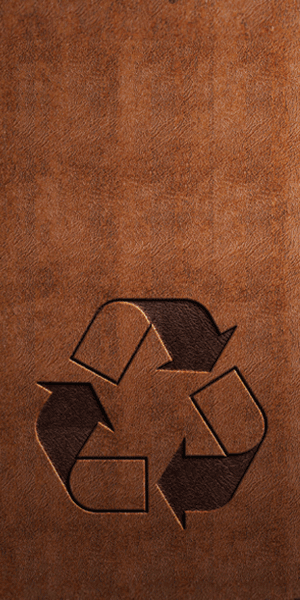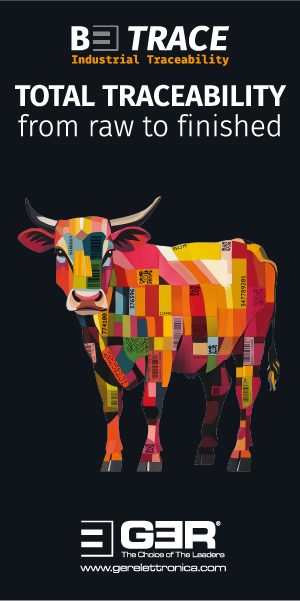Market Intelligence—30.01.24
Macroeconomics
There are currently no signs of any truly viable solutions to the conflict in the Middle East, which, unfortunately, means that fighting will continue to smoulder. This also means that the Houthi rebels’ attacks on international shipping in the Red Sea are also unlikely to come to an end in the short term. Even if an international military alliance is now endeavouring to restore the safety of shipping in the Red Sea, we know a 100% restoration will be possible for now.
This means that logistics chains remain extremely tense and rerouting shipping traffic around the Cape of Good Hope is currently the only option for many shipping companies. All that remains is the hope that the obstructions on the route through the Red Sea and the Suez Canal will disrupt so many international interests that influence from all sides could possibly help bring about an end to the attacks.
On the financial markets, everything continues to focus on the development of interest rates in relation to inflation. Even if the statistical data currently shows a significant decline in price increases, there are still many reasons to believe that the spectre of inflation has not yet been completely banished. Sharply rising wages, additional costs owing to logistics challenges and a market for energy that remains unpredictable remain major risks.
However, investors are relatively unmoved at the moment and the stock markets are still at record levels. Even weakening growth rates in Europe, particularly in Germany, combined with growing political uncertainty are not dampening sentiment at the moment.
The price of gold has moved relatively little in recent weeks, but is still successfully defending the $ 2,000 per ounce mark.
Oil prices have risen slowly and steadily towards the $80 mark over the past week. This is still within the narrow range that has now been in place for months, but a breakout is possible and conceivable at any time. The good news is that, at least in Europe, half of the winter is already behind us, meaning that current supplies of gas and oil will probably be sufficient for the rest of the heating season.
The US dollar has also not left its trading range against the euro in recent weeks. Any attempt to break out on one side or the other fails and short-term weaknesses or strengths are immediately corrected. In the end, the US dollar was slightly firmer against the euro at $1.08.
Leather Pipeline
It is still very difficult to track down any real news or trend developments along the leather pipeline. In Asia, people are now preparing for the Chinese New Year (February 10) and the discussions are really only centred around the question of how long and which factories will close.
Various consumer goods fairs have not provided any major impetus. The only thing you could really take away from the IMM furniture fair in Cologne was that the proportion of leather furniture on display was neither particularly large nor increasing. Textiles dominated the scene and this sets the tone for the next season. What you see at the fair today is ultimately what the manufacturers will be offering in their collections for the next season, essentially for the period after summer 2024.
As we have already reported in the past, periods of cold and snowy weather in northern Europe have led to increased sales of winter shoes. North America and China are also experiencing a cold winter in many regions. However, we are hearing that new orders for the next season are still being handled very cautiously at the moment. Of course, there is also the question of whether this could really help the demand for leather. The $1 million question for all of us is whether there will be a trend reversal and whether the use of leather as a material can be expected to increase again.
Even at the risk of being taken for heralds of bad news again, we can neither recognise this trend reversal at the present time nor do we have any justified hope that the pressures on the leather market might soon ease.
At the moment, it looks more like the pressure is tightening further and further. On the one hand, starting in Europe, the pressure from politicians and NGOs is not letting up. Meat production and meat consumption are to be further curbed and leather continues to be seen by interested parties as a supporter of meat production. The difficulties faced by the supply chain and rising costs continue to put pressure on the use of leather. The response of the leather industry to counter this pressure with more and more certifications is increasingly counter-productive. Current legislation is doing the rest.
In regions where this pressure is still significantly lower, the problem is that leather is being used less and less in mass production anyway; marketing considerations or production costs are playing the decisive role here.
Apple is just one example of this. Against the wishes and interests of a large proportion of customers, the company has decided against leather as a material. No matter how great the outcry, it has not led to a correction of the decision. We would even assume that the currently used, inferior material may be replaced in the foreseeable future, but we do not believe that leather will return. In this context, we would also like to remind you that little kangaroo leather is in use in high-quality football boots now.
The retro trend in sports shoes, which is currently associated with the use of leather, has yet to prove its sustainability. In this context, the new adidas Samba models are made from nylon fabric. In the end, only the consumer can decide how things will proceed. If, as we all hope, consumers explicitly opt for the leather versions and the shoes made of nylon fabric remain a shelf-warmer, this would perhaps become a signal.
If we assume that the pressure could tighten further on the demand side because we do not see demand increasing in sectors such as furniture, automotive and mass leathergoods, then the supply side will adapt to the situation accordingly.
This has been a clear trend for some time now, where fewer cattle hides and other raw materials for leather production are being produced and processed. Owing to the cost and revenue situation, lower and lower levels of raw material has been collected for use in the leather industry for years already. The independent collection chain in particular, which operates on its own account, logically dispenses with all quantities that do not generate cost-covering returns. This may not be so obvious to many in the western world, but if you take a look at Africa and the Indian sub-continent, you will quickly realise that a large proportion of the raw material is no longer being extracted there.
In other regions, too, some of the raw materials are no longer being collected. Small quantities that result in high unit costs, or qualities that do not generate sufficient revenue have not found their way into the production chain for some time now. The further the demand for leather shrinks and the further the revenues for the raw material fall, the more this trend will continue. These are not quick and sudden developments, but slow, steady trends that we have been observing for years now. If you look closely, you can also see this development in Europe, the Americas and Oceania.
Markets are constantly rebalancing. Less demand for leather means less capacity along the chain, and as capacity is not reduced linearly across all market participants, this leads to capacity closures as well as falling utilisation.
To some extent, the leather industry is tightening the pressure itself with a multitude of different, self-created problems; it is courting its tormentors. Even when the effects of microplastics are being discussed almost daily, the leather industry is still not able to present leather as an alternative material suitable for mass production.
The certification ‘industry’ for leather is growing with new and meaningless parameters, certifying and taking care of irrelevant factors that are already regulated by law, tying up energy, inhibiting creativity, hindering known and proven uses and processes, and at the same time shrinking leather production. Find the error.
There has also been little movement in the split market. In China, the market has stabilised. For leather production, niche areas can play a decisive role and in the mass business for suede, the price ultimately determines the business.
We are currently observing with interest the increasing use of wool-on materials for sheepskins. This winter we have seen more and more sandals and slippers made from this material and these have been sold in increasing numbers by luxury brands and fashion labels. New markets are appreciating the excellent properties of this material. As raw materials are cheaper than ever before, and this is unlikely to change in the short term, this area in particular will be very interesting to see whether it was just a flash in the pan or whether we see more of these items next winter. In addition to the question of fashion, this would place a particular focus on function this year. Anyone who knows that real wool and leather mean warmth and comfort will probably also be able to take this experience with them for other products. There are few things more convincing than learning from experience.
The next few weeks will probably be a very quiet phase. In Asia, activity will be slowed by the Chinese New Year (February 10) and in the rest of the world there are no real events at the moment that could have any direct effect on the leather business. Basically, some are now waiting for the impressions from the leather trade fairs in India and then in Milan, which will probably have the greatest impact on the leather sector in the months ahead.












